Explore the spooky locations that inspired English horror writer M.R. James, with EDDIE BRAZIL
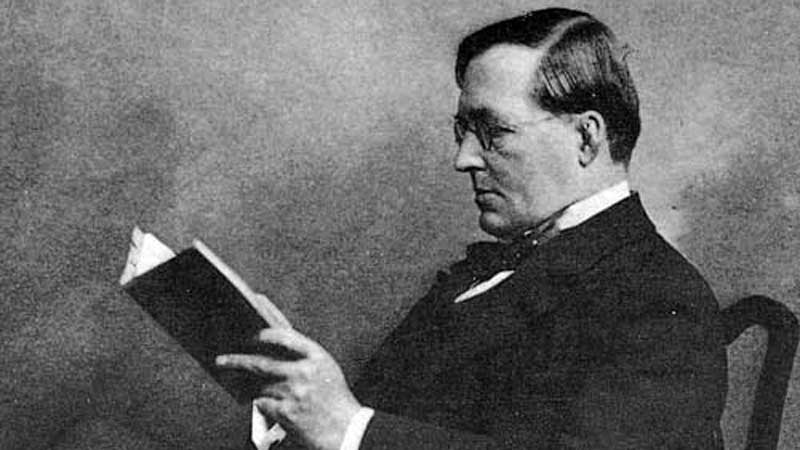
Montague Rhodes James is considered the greatest writer of ghosts stories to come out of England.
His tales have been adapted for cinema, TV, radio and the stage.
Yet, I suppose for the purist, the perfect way to enjoy the stories is to read them by a crackling fire in a shadowy, candle-lit room while outside a midnight wind moans and creeps around the house
In recent years, many James fans have taken to searching out the locations and settings for the stories. Here are the sites – literary, televisual, and real of the terrors and wraiths which have haunted the fans of M.R.James.
M.R. James locations
Oh Whistle and I’ll Come to You My Lad
Real life locations: Felixstowe and Dunwich, Suffolk, and Waxham, Norfolk
Oh Whistle is perhaps James most well-known and popular story.
It is the most anthologized and has been adapted for television and radio.
The plot is typical James. An intellectually-arrogant Cambridge professor, while holidaying by the winter seaside, discovers an ancient metal whistle.
On it, carved in Latin, are the words, “Who is this who comes?” In blowing the whistle, the professor unleashes a terrifying spectre, which haunts his waking and sleeping hours.
James set the story in the seaside village of Burnstow, which in reality is Felixstow in Suffolk.
Today, Old Felixstowe would still be recognizable to James.
A lonely forlorn shore intersected by Groynes. In the late winter dusk, it would be easy to imagine “something” coming.
However, when Jonathan Miller adapted the story, starring Michael Horden for TV in 1968, he chose to film the the professors ordeal farther up the coast at Dunwich.
An equally lonely and eerie shore.
The graveyard and beach, where Horden first encounters the spectre can still be explored.
The location for the professor’s nightmare, in which he is persued by the ghost, was shot further north up the coast, in the county of Norfolk at Waxham.
This is indeed a atmospheric site, especially in winter.
James fans should experience this location in the dark months, when the beach is deserted and all manner of solitary distant figures coming their way will soon have them running for the car.
A Warning to the Curious
Real life locations: Aldeburgh, Suffolk, and Wells-next-the-Sea, Sherringham and Happisburg, Norfolk
A Warning to the Curious was first published in 1925, and tells the story of Paxton, an antiquarian and archaeologist who holidays in “Seaburgh”, based on the Suffolk seaside town of Aldeburgh.
Paxton inadvertently stumbles across one of the three lost crowns of Anglia, which legend says protect the country from invasion.
On unearthing and stealing the crown, Paxton is stalked by its supernatural guardian.
Once again it is a typical James plot device of the unwary and curious, who crosses the supernatural Rubicon and must pay the price in fear or death.
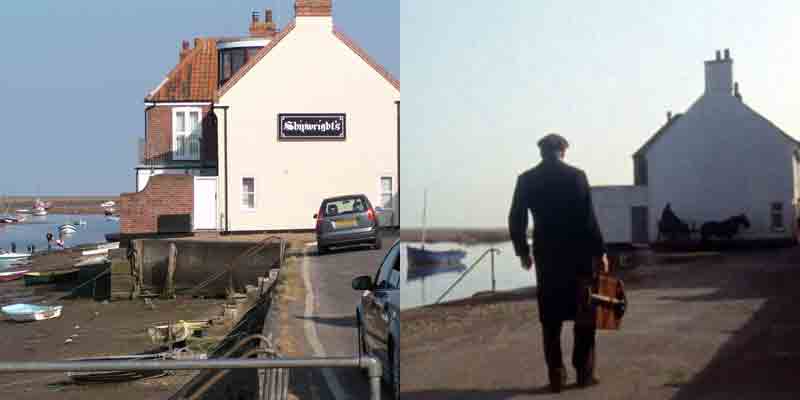
The story was adapted for TV by Lawrence Gordon Clarke in 1972 as one of the celebrated “A Ghost Story for Christmas” series.
Like Miller, Clarke decided not to film the action in Seaburgh/Aldeburgh, but in three locations along the coast of Norfolk. Wells-next-the-Sea, Sherringham and Happisburg all double for Seaburgh.
The inn where Paxton stays can be found in Wells-next-the-Sea, and the graveyard where he discovers the last resting place of his eventual nemesis was shot at the not-too-distant Happisburgh Church.
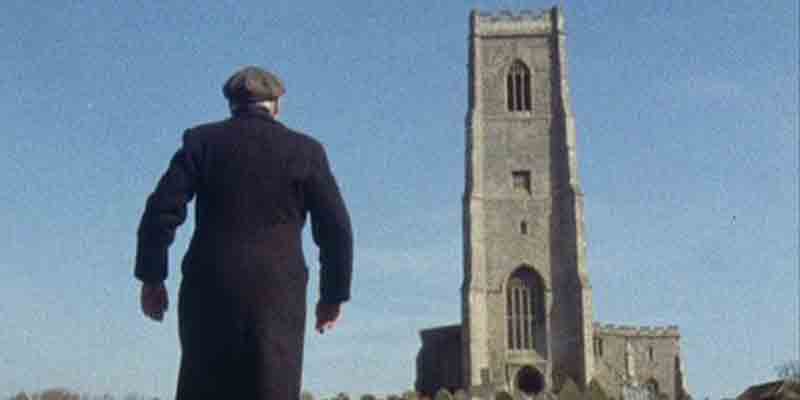
Paxton arrives at Seaburgh by way of the North Norfolk railway, and it’s possible to travel on this delightful preserved steamline from Sherringham to the beautiful Georgian town of Holt.
Paxton eventually meets his doom in woods which can be accessed from Wells-next-the-Sea beach
Lost Hearts
Real life locations: Sleaford, Ormsby Hall near Louth, Brocklesbury Hall and Brocklebury Mausoleum near Immingham, all in Lincolnshire
Lost Hearts was written by James in 1895 and is considered one of his most disturbing tales as it concerns the predation of children.
Young Stephen Elliot goes to stay with an elderly relative at his grand house, Aswarby Hall, in the wilds of Lincolnshire.
The relative, Mr Abney, appears to be a kindly and benign old gentleman.
In truth, he is a murderous black magician intent on killing his young nephew to achieve immortality.
Abney has already disposed of two children, and it’s their ghosts who return from the grave to warn Stephen of his fate and ultimately take their revenge on the evil Abney.
Lost Hearts was adapted for television in 1973, as part of the Ghost Story for Christmas series.
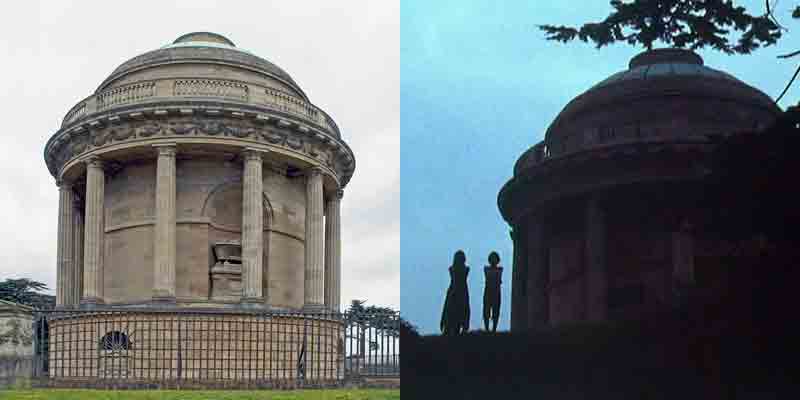
Curiously, James set the story in the actual Aswarby Hall near Sleaford in Lincolnshire, which was demolished in 1951.
Lawrence Gordon Clarke chose other Lincolnshire locations to stage the action.
Ormsby Hall, near the town of Louth is the location for Aswarby, and Brocklesbury Hall, which is close to the port of Immingham, doubles as the halls grounds with their classical follies and sham ruins.
Brocklebury Mausoleum is featured in the TV adaptation, as it is here that young Stephen encounters the ghosts of the two children.
It was built between 1786 and 1794 by the architect James Wyatt. His classical design is based on the Temples of Vesta, Rome and Tivoli.
Today the James fan can visit the site as the grounds are open to the public.
The Treasure of Abbot Thomas
Real life locations: Scandinavia, Church of St Bertrand De Comminges (France), Abbey of Steinfeld (North Germany), Ashridge House (Hertfordshire) and Wells Cathedral(Somerset)
A few of James stories are set on the continent.
Count Magnus and Number 13 have Scandinavia as their location.
Canon Alberic’s Scrapbook is set in the real Church of St Bertrand De Comminges in the foothills of the Pyrenees in France.
The Treasure of Abbot Thomas has the Abbey of Steinfeld in North Germany as its setting.
The plot, once again is typical James.
An antiquarian researching in to the stained glass of Steinfeld Abbey, discovers a hidden code concealed within the windows concerning buried treasure.
He cracks the code, loots the treasure and yet has to undergo the terror of being pursued by the hoard’s supernatural guardian.
The story was suggested to James when he was cataloguing the stained glass in the Gothic revival chapel at Ashridge House in Hertfordshire.
The glass is 16th century and originally from Steinfeld Abbey.
The story was adapted and somewhat altered by John Bowen in 1974 for the Ghost Story for Christmas series.
Micheal Bryant stared as the main protagonist, Rev Somerton, and the action relocated to England with much of the filming being shot at Wells Cathedral in Somerset.
The Stalls of Barchester
Real life locations: Canterbury, Salisbury, Hereford and Norwich cathedrals, and Hungate Centre for Medieval Art in Norwich, Norfolk)
The Stalls of Barchester was the first in the Ghost Story for Christmas series, and arguably the best.
It concerns an ambitious clergyman. Rev Haynes, played by Robert Hardy, eager for clerical advancement.
He conspires to hasten the end for the aged and seemingly-everlasting incumbent standing in his way, with the help of a loose stair rod, which plummets the old man to a tumbling, neck-breaking death.
Rev Haynes is unaware that the carvings on his choir stall – a hooded monk and a sinister black cat – possess supernatural powers.
Anyone who touches them with blood on their hands will pay a price. Haynes is haunted to his death by the figures of the monk and cat.
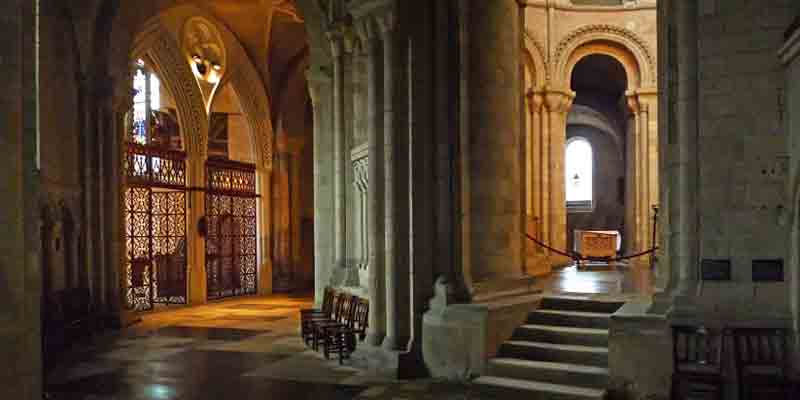
James set the story in the fictitious Cathedral of Barchester, an amalgamation of Monty’s favourite cathedrals of Canterbury, Salisbury and Hereford.
When the TV adaptation was filmed in 1971, with Clive Swift playing an antiquarian researching in to the strange death of Rev Haynes, Gordon Clarke chose Norwich Cathedral as the setting.
Today it is possible to visit the library where Swift discovers the paperss relating to the Reverend’s demise, along with the cloisters, cathedral close and the ambulatory where Haynes is eerily pursued one night by ghostly footsteps.
There is also the church museum of St Peter Hungate which was also featured in the production.
It is where the Clive Swift character finally uncovers answers to Haynes death. The museum closed in 1995, but is now reopened as the Hungate Centre for Medieval Art.
A Vignette
Real life locations: Livermere Rectory in Great Livermere, Suffolk
Perhaps the perfect location for the James fan to visit in search of James ghosts is the home where Monty grew up, Livermere Rectory in Suffolk.
Great Livermere lies some five miles north of Bury St Edmunds.
It is the setting for A Vignette, and it was the last story that James wrote.
It was first published some five months after the author’s death in the November 1936 issue of the literary journal, London Mercury.
The story’s unnamed, narrator and protagonist, undoubtedly James himself, describes a ghostly event from his childhood.
As a boy, he lives in a rectory in the countryside.
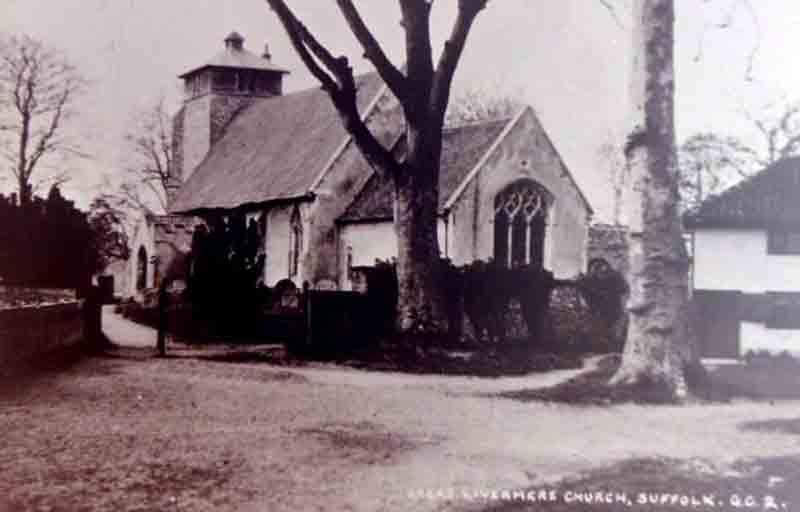
Next to the rectory is a small wood known as the Plantation.
Although he is not really certain why, he becomes increasingly scared of the Plantation and starts to have nightmares connected to it.
When evening comes, all of the workers leave without delay.
The narrator looks around the empty garden and sees something at the wooden gate – “white or partly white” and visible through the small hole in the gate.
He sees a face. and forehead covered by a shroud.
It stares straight at him, and begins to move towards the house.
Soon there are footsteps on the stairs and a hand on the door.
At this point the narrator awakes.
It is widely believed that A Vignette is based on a genuine experience from M.R. James’ boyhood.
Intriguingly many Livermere residents believe that the plantation which James refers to and the area adjacent to the rectory are haunted.
Apparitions have been reported and locals report that their dogs refuse to go near the wood and its boundary wall.
The plantation where James had his experience is still to be explored.
Livermere Rectory still stands but is a private house.
For the James enthusiast the parish church is a must.
James’ father was rector, and within the churchyard there are the graves of a Mrs Mothersole and a Mr Gaudy. These are two names which appear in the stories, The Ash Tree and The Mezzotint.
Have you been to these M.R. James locations? Tell us about them in the comments section below








Great Job. To add to Lost Hearts, the interior shots of the house were actually done at Harrington Hall, also in Lincolnshire, as related by director Lawrence Gordon-Clarke in his commentary on the DVD release. Unfortunately, the house was gutted by fire in 1991 so all that you see in the film, including the staircase and attic space, will have been destroyed. The church in the funeral scene at the end is St Peter and St Paul, South Ormsby.
Thanks Patrick, that’s really useful 🙂 Cheers David
My family were on holiday in somerset some years ago and visited Wells Cathedral on a wet afternoon. It was not until inside that I remembered it from the Ghost Story episode The Treasure of Abbot Thomas. I got some good pictures of now and then scenes. I wanted to ask the staff if they had any memories of filming but they are not keen to talk after somebody informed me that some x rated stuff (possibly Pasolini) was shot there about the same time. It was also the setting of Hot Fuzz.
Hi John, I’ve definitely got to go to Wells Cathedral now! Sounds great 🙂 David
[…] Real-life M.R. James locations every fan must visit […]
Was delighted to see that Happisburgh Church hasn’t changed at all over the years. A beautiful bleak place overlooking the sea and now forever part of one of the great James adaptions.
He also spent some time with lifelong friend E F Benson at Plas Tan-Yr-Allt Historic Country House here in North Wales – http://www.plastanyrallt.co.uk